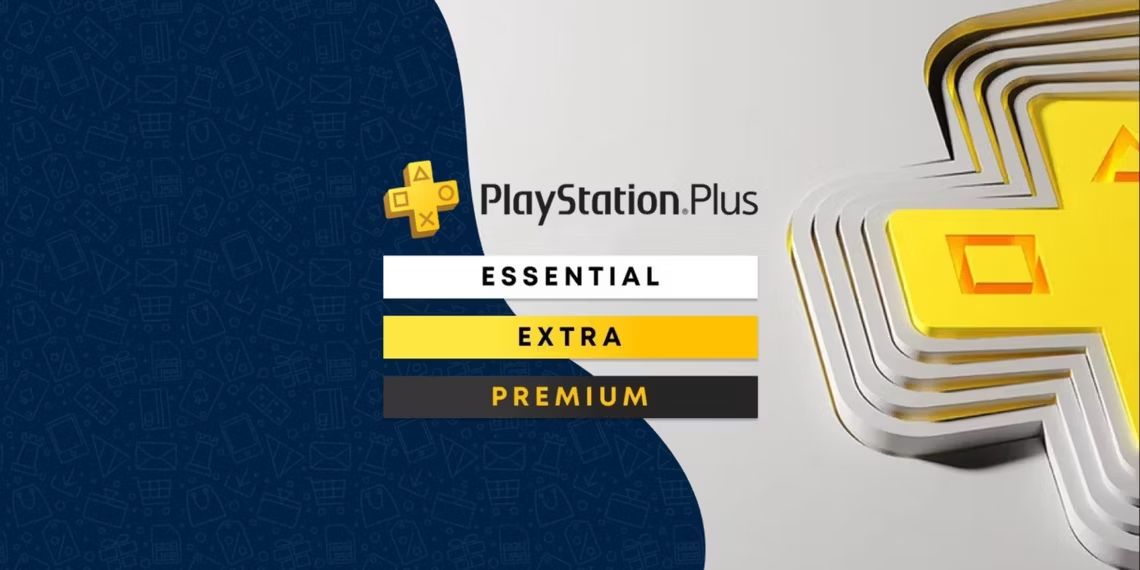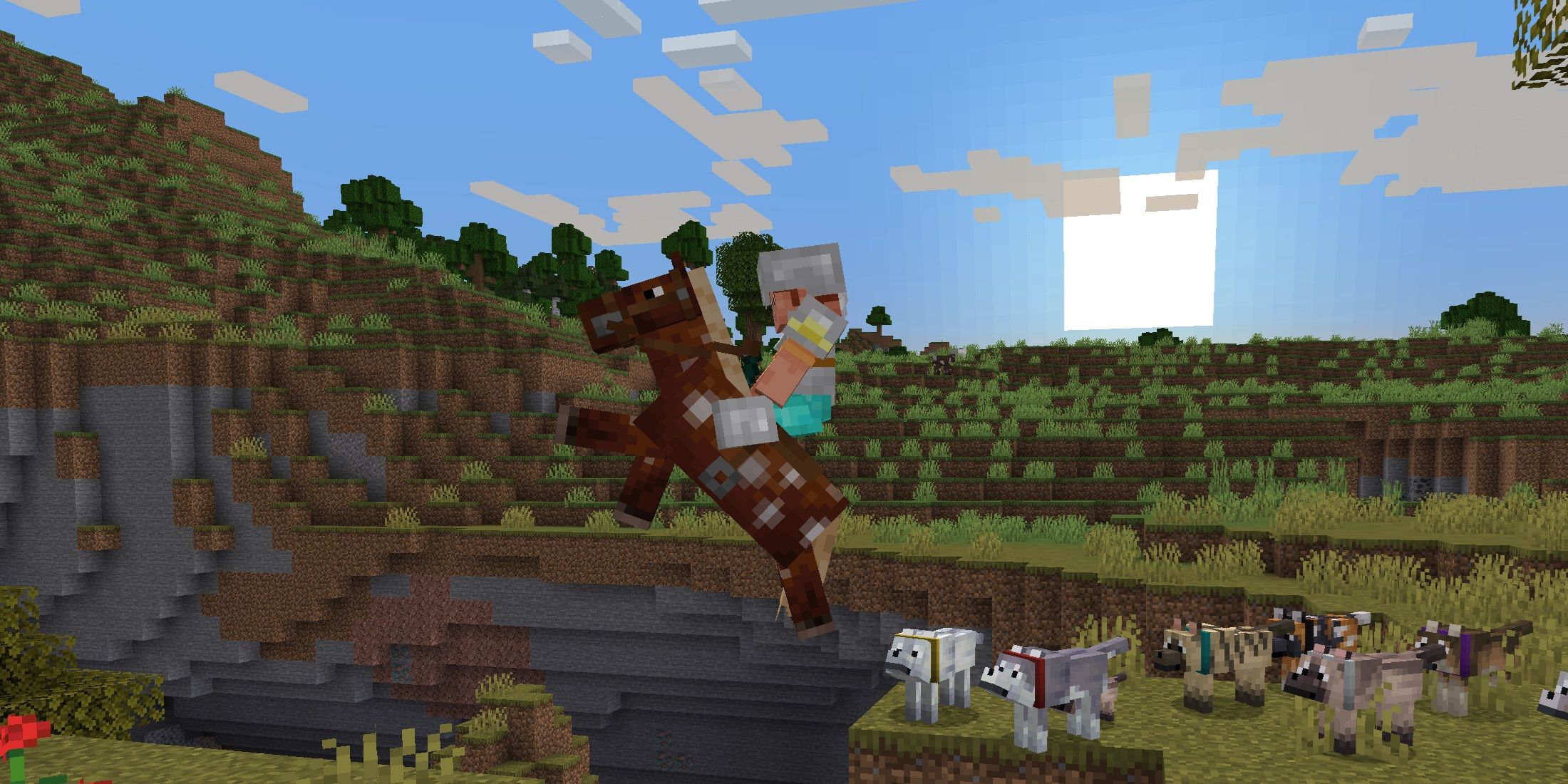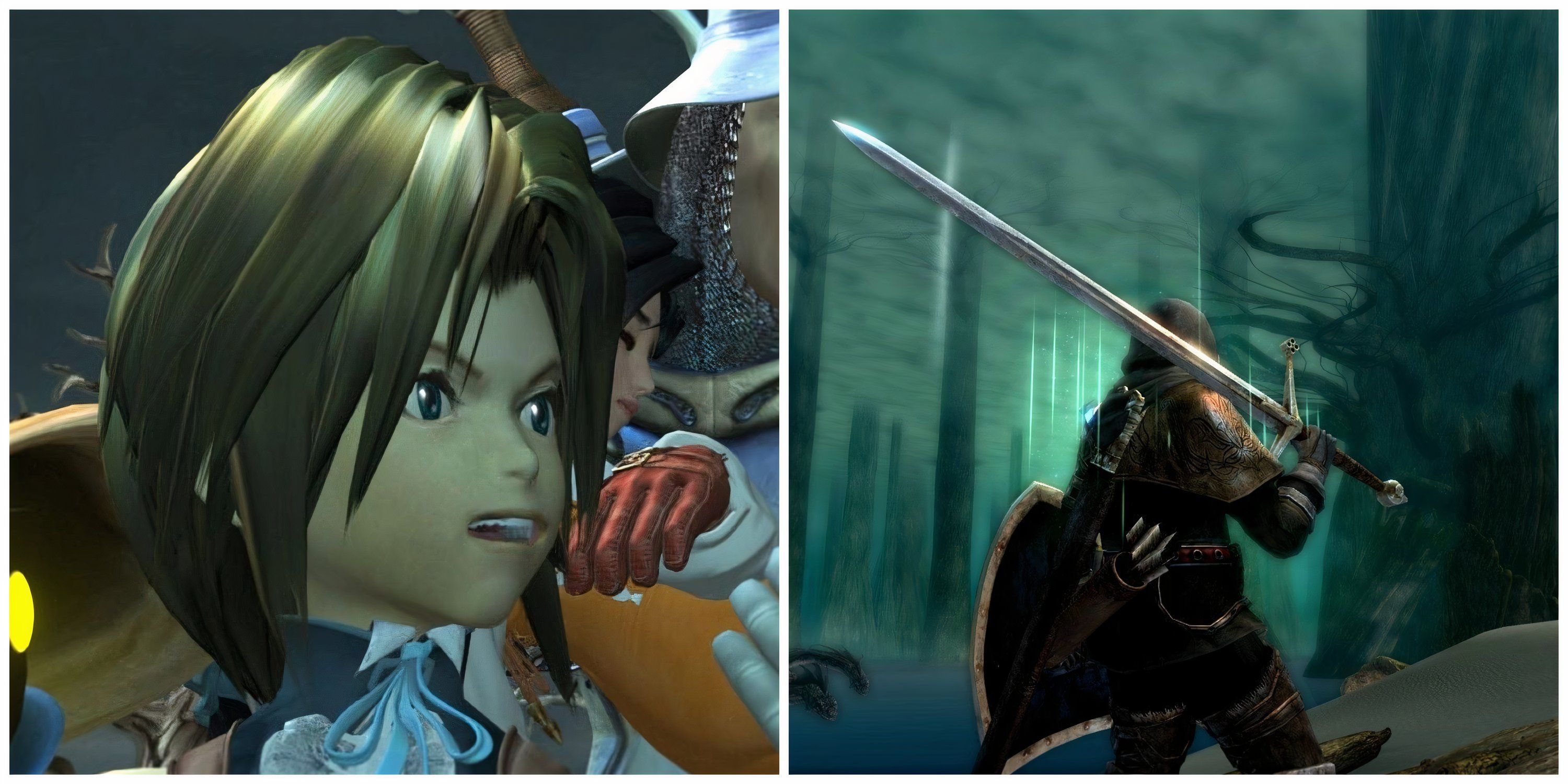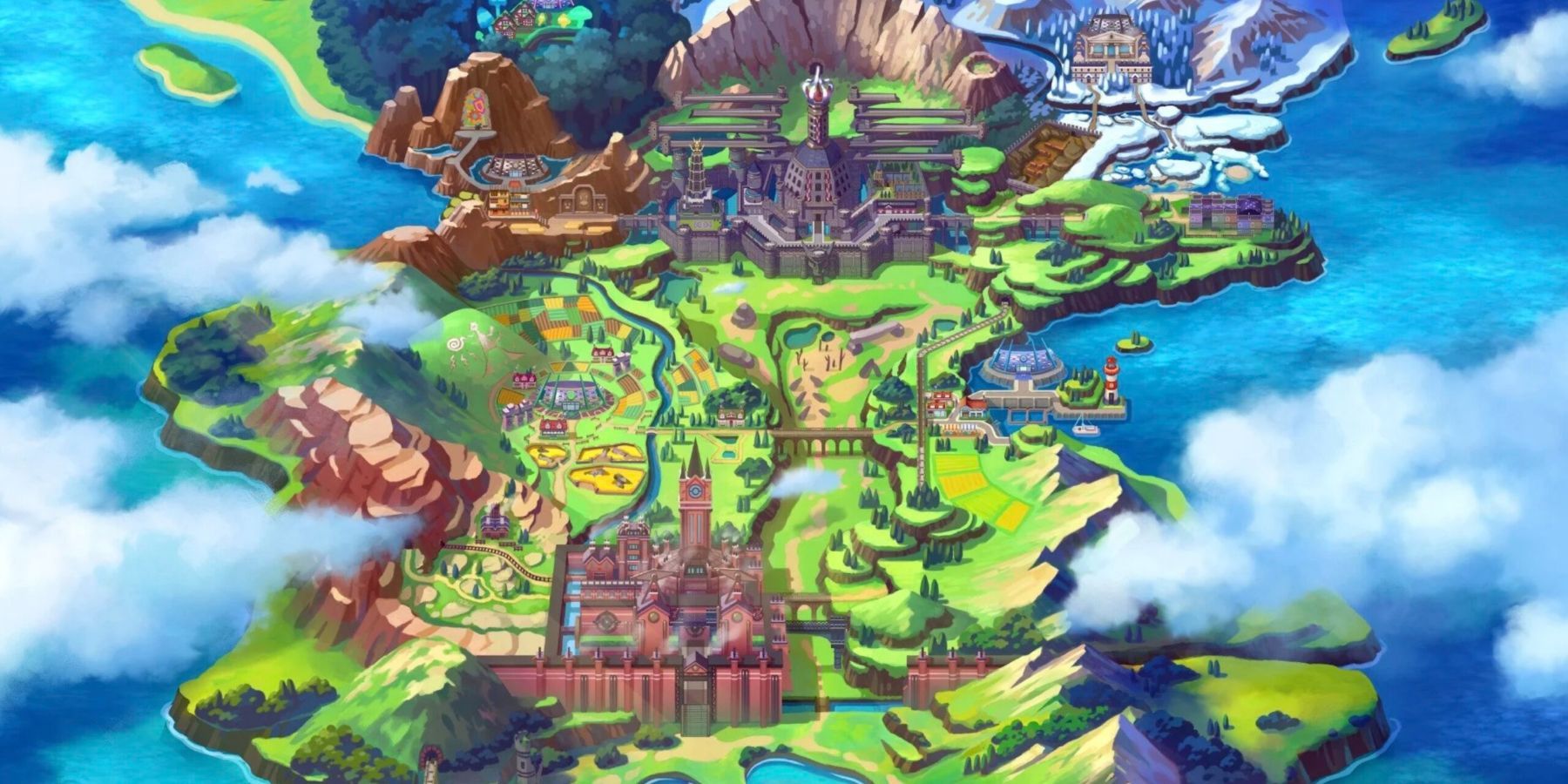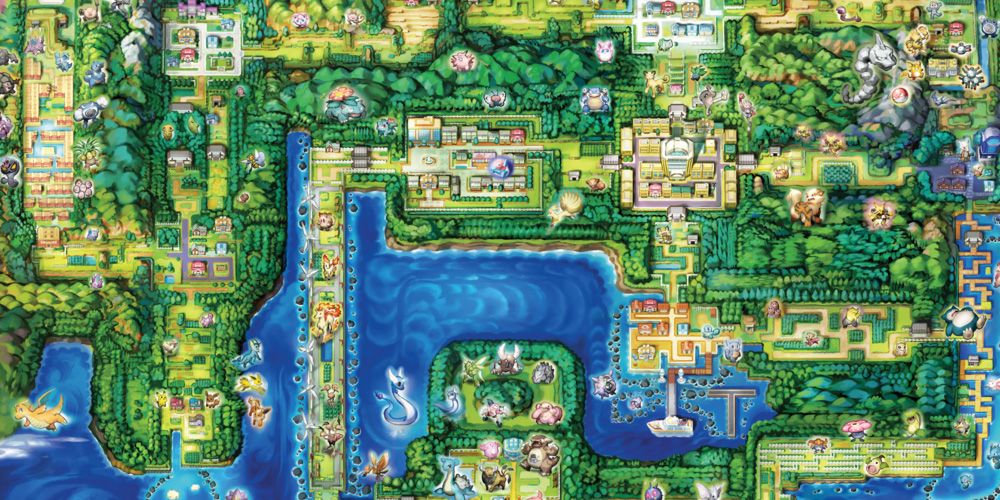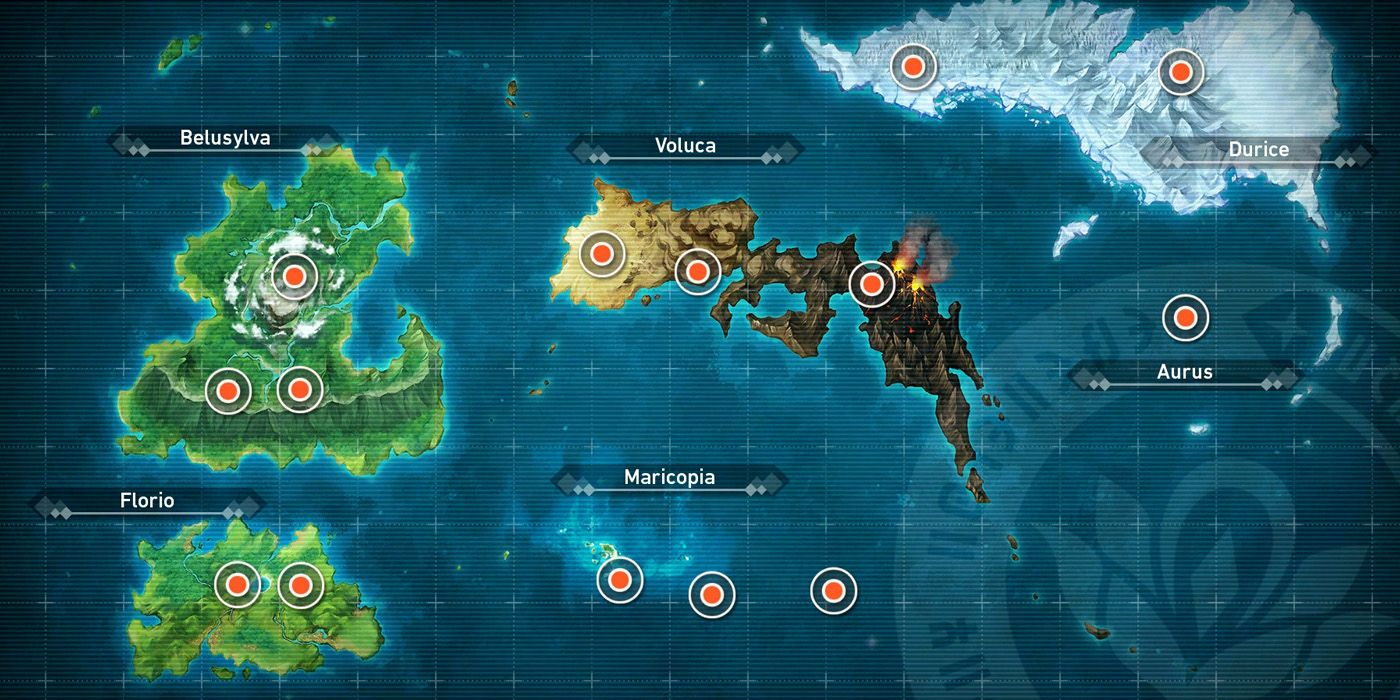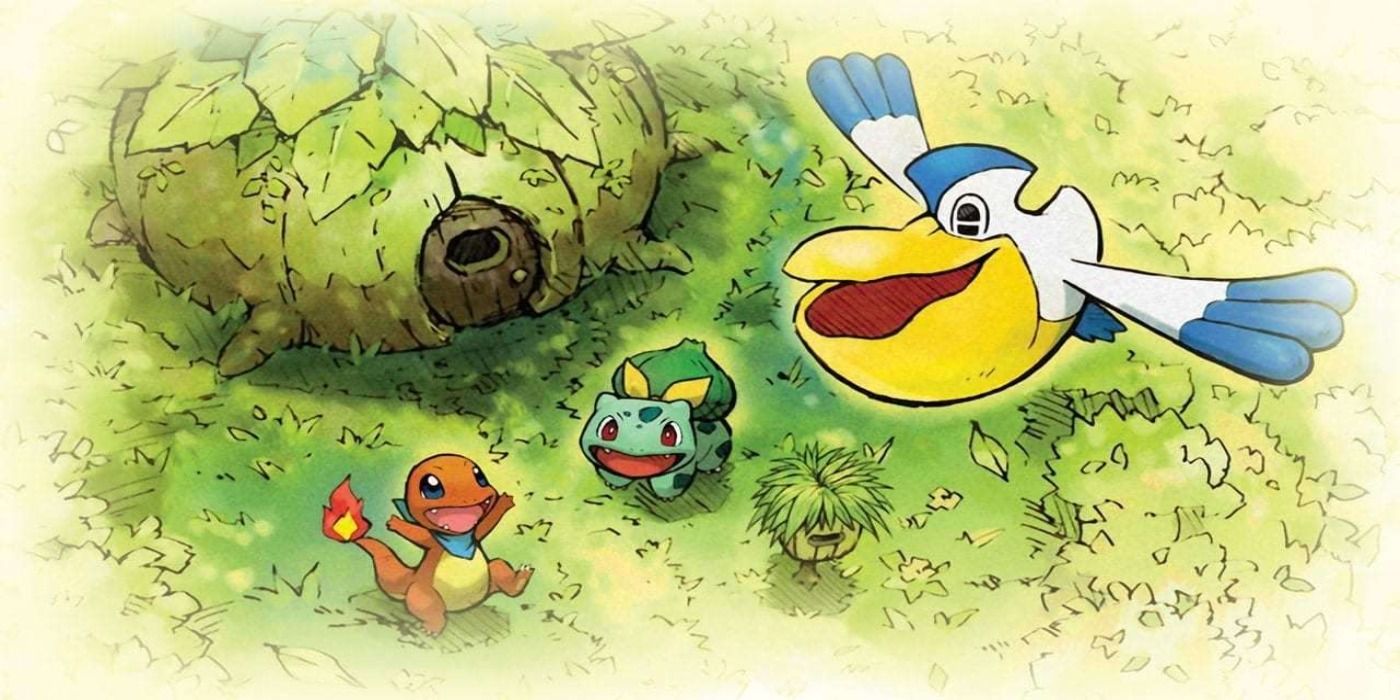The world of Pokemon is a vast and mysterious place. Every corner is filled with magical creatures, and every human settlement is dotted with rumors and local legends. Many of these locations have vastly different environments, enabling them to support a massive variety of Pokemon. Climates are so different between the various islands and nations of the Pokemon world, that a species brought to a different region may radically shift in abilities to adapt. The full scope of this world is not clear, and will probably never be fully defined, but it grows with every new entry.
At this point, the number of regions, islands, and other areas in the Pokemon world have grown to a staggering number. The settings of the mainline games are one thing, but there are plenty of other places found in the Pokemon spin-offs. New titles tend not to take place in the same region as others unless they are remakes, so a new location is featured in almost every game. While these may not all introduce new Pokemon, they can still offer unique looks at Pokemon’s universe.
Regions Found in the Core Pokemon Series
Normally, Pokemon games have a rigid structure behind their regions. They all introduce a Pokemon League or equivalent challenge, a series of locations needed to progress that challenge, and a number of different environments found along the way to house different species of Pokemon. Legendary creatures are tucked away in various corners of the map, and players will need to gain field moves or Ride Pokemon to open more places up for exploration. Many of these places are island nations, though they are large enough that islands with extra content near them are still referred to as such. The core Pokemon games’ areas are:
- Kanto - Red and Blue
- Sevii Islands - FireRed and LeafGreen
- Johto - Gold and Silver
- Hoenn - Ruby and Sapphire
- Sinnoh - Diamond and Pearl
- Unova - Black and White
- Kalos - X and Y
- Alola - Sun and Moon
- Ultra Space - Sun and Moon
- Ultra Megalopolis - Ultra Sun and Ultra Moon
- Galar - Sword and Shield
- Isle of Armor - Sword and Shield
- Crown Tundra - Sword and Shield
Many of these places sport different cultures that ensure they will not be mistaken for one another. Kanto, the Sevii Islands, Johto, Hoenn, and Sinnoh all take inspiration from different islands making up Japan, and are referred to by Professor Oak in generation 4 as part of one larger country.
Unova is based on New York, Kalos on Metropolitan France, Alola on Hawaii, and Galar on the United Kingdom. The Isle of Armor is based on the Isle of Man, and the Crown Tundra is based on Scotland. Pokemon Scarlet and Violet’s region, while not yet named, will likely be inspired by Spain. There is also the matter of alternate timelines and dimensions, the latter of which are the nature of Ultra Space and Ultra Megalopolis. There have also been implications that some games take place in parallel timelines, but nothing has ever been confirmed for sure.
Places Found In Pokemon Spin-Offs
While the main regions and their offshoots maintain the usual Pokemon formula, there are plenty of games and spin-offs that don’t. The settings in those games include:
- Pokemon Island - Pokemon Snap
- Mintale Town - Pokemon Channel
- Orre - Pokemon Colosseum
- Fiore - Pokemon Ranger
- Almia - Pokemon Ranger: Shadows of Almia
- Oblivia - Pokemon Ranger: Guardian Signs
- Unnamed Pokemon Trozei Area
- Ferrum - Pokken Tournament
- Ryme City - Detective Pikachu
- Tumblecube Island - Pokemon Quest
- Pasio - Pokemon Masters EX
- Lental - New Pokemon Snap
- Aeos Island - Pokemon Unite
- Hisui - Pokemon Legends: Arceus
Several of these games make reference to other places or concepts found in the larger series, so it can be assumed that they take place in the same world. Not all of them are fleshed-out regions, and even Pokemon Ranger’s smaller locales are still bigger than some.
Pokemon Channel largely takes place in and around Mintale Town, which seems to have a fair number of climates within walking distance but is still very compact. Ryme City seems to be the same way. Ferrum and Aeos seem to be full-sized regions, but nothing outside their battle arenas are explored. Pasio is even explicitly artificial. Only Orre is a full-sized region, and since it’s largely a lifeless wasteland, key areas are the sole places explored.
Pokemon Island and the Lental region are both better realized, with the player riding through each place to find rare Pokemon in their natural habitat. Tumblecube Island, despite its art style, is another island primarily just inhabited by Pokemon. Hisui is similar, but that’s not from a lack of human interest; rather, Hisui is just Sinnoh before human society spread throughout the region. That’s a marked difference from other regions and how Pokemon usually approaches its story, though it wasn’t technically the first to take place in the past.
Areas That May or May Not Exist in the Pokemon World
Not all spin-offs are made equally canon, but they do still contain plenty of new locations. While some of these definitely lie outside the Pokemon world, others aren’t so clear. These locations include:
- Orange Archipelago - Pokemon Anime
- TCG Islands - Pokemon Trading Card Game and Pokemon Card GB2: Here Comes Team GR!
- Pokemon Mystery Dungeon World
- PokePark - PokePark Wii: Pikachu’s Adventure
- Ransei - Pokemon Conquest
- Decolore Islands - Pokemon Anime
- Carmonte Island - Pokemon Duel
The Pokemon anime is filled to the brim with new places and faces to fill its seasons, but only one season and one extended arc have taken place entirely within original locations. The Orange Archipelago likely served as the inspiration for the Sevii Islands, and actually have their own professor and a handful of gyms. The Decolore Islands are where the Black and White anime’s final arc occurs, and are likely an Orange Archipelago callback due to bridging the Unova and Kanto regions. The Orange Archipelago was still considered canon to the anime as of its tenth anniversary, and could feasibly exist in the Pokemon world.
The Ransei region's canonicity is less feasible. The region is meant to fuse Koei Tecmo's Samurai Warriors franchise with a Pokemon title, and the resulting island is in the conspicuous shape of Arceus. Still, there is a chance that this region could have been the stage for Pokemon Conquest’s events around the time of Pokemon Legends. Too few Pokemon games have deviated from the modern timeframe, so even this look at one outside the series' standard context is appreciated.
The TCG Islands and Carmonte Island are special cases, as while they could all exist in Pokemon’s world, they don’t actually focus on Pokemon. They instead host competitions for the Pokemon trading card game and the Pokemon trading figure game, respectively, with no actual Pokemon in sight. That might place them in their own world, but a couple placements that aren’t in contention are the Mystery Dungeon and PokePark games. These explicitly take place in alternate realities where Pokemon are dominant, although some Mystery Dungeon games do reference Pokemon trainers and human civilization. These worlds may run parallel to the normal Pokemon world, but they ultimately have their own stories to tell.

